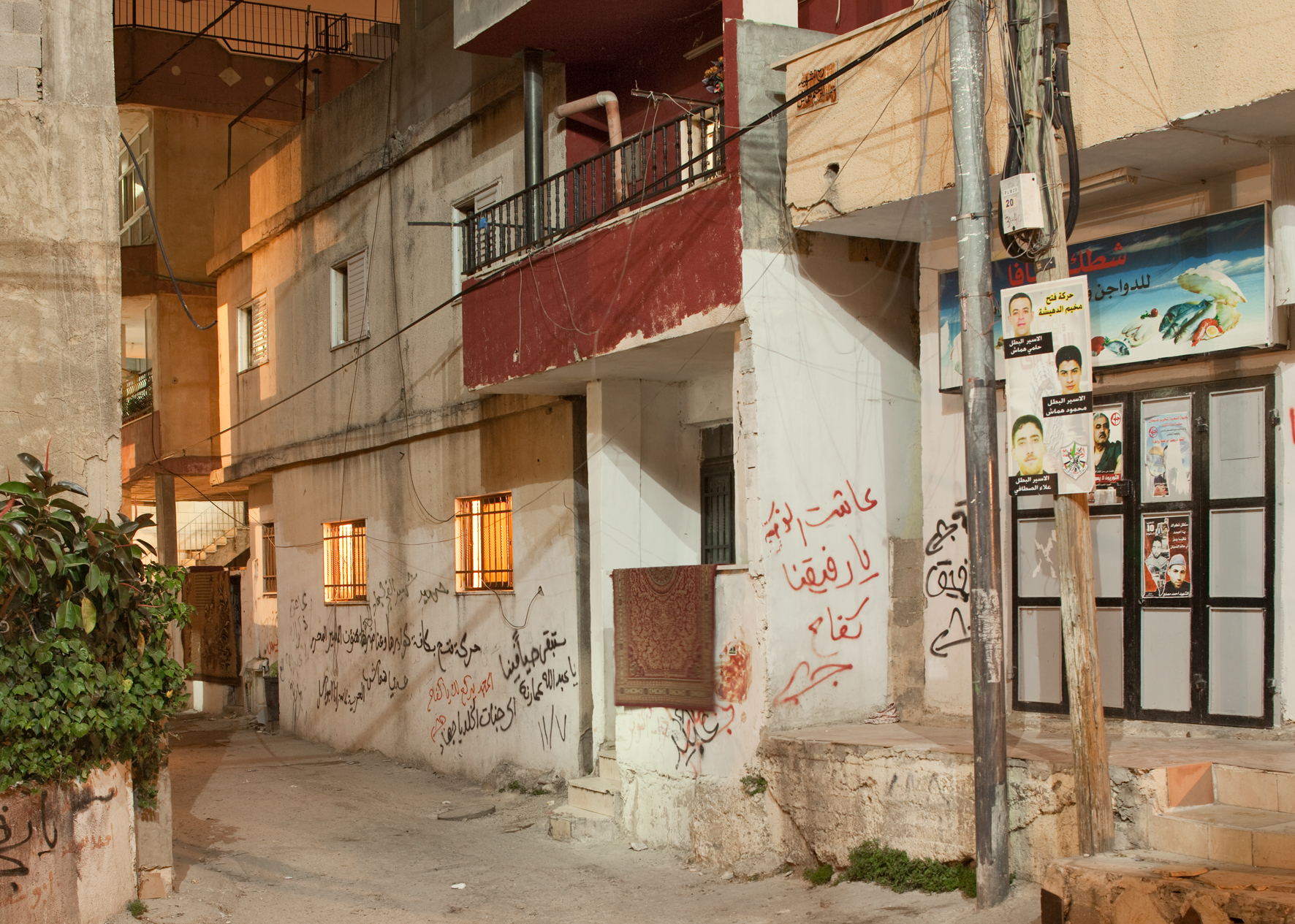The application of Dheisheh Refugee Camp is the example for the serial nomination of all 59 Palestinian refugee camps in the Levant.
See ➝
Nakba, translated in English as “tragedy,” is a term that refers to the expulsion of two-thirds of the Arab population living in historical Palestine between 1947–1949 by Jewish militias. The term is used to mark not only an event in time but the ongoing tragic events perpetrated by successive Israeli governments, including house demolitions, land expropriations, movement restrictions, extrajudicial killings, and mass incarcerations.
The Palestinian Authority was created during the Oslo Peace Process with a limited form of self-governance restricted to areas A and B, a total of approximately 40% of land in the West Bank, and its mandate was supposed to terminate in 1999 with the establishment of a sovereign and independent Palestinian state.
Popular committees began to emerge informally during the first Intifada and evolved into formal bodies representing the camp during the 1990s with the constitution of the Palestinian Authority. See Sari Hanafi, Governing Palestinian Refugee Camps in the Arab East (Beirut: Issam Fares Institute for Public Policy and International Affairs, 2010), ➝
Riccardo Bocco, “UNRWA and the Palestinian Refugees: A history within history,” Refugee Survey Quarterly 28, nos. 2–3, UNHCR 2010, ➝
Naba’ Al-Assi, The Municipality (Dheisheh: Campus in Camps, 2012), ➝.
Ahmad Laham and Qussay Abu Aker, The Suburb (Dheisheh: Campus in Camps, 2012), ➝.
Refugee Heritage is a project by DAAR, edited and published by e-flux architecture and produced with the support of Campus in Camps, the Foundation for Art Initiatives, the 5th Riwaq Biennale and the Decolonizing Architecture course at the Royal Institute of Art in Stockholm, Sweden.
